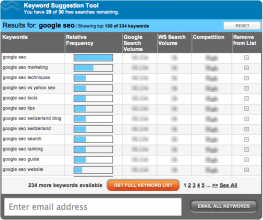There is a technique that must be mastered if you want your content to be noticed on Google. It starts with figuring out where you fit in and ends with creating valuable content. This article is aimed to increase awareness of what it takes to become an online authority and show you how to get your content recognized on the web.

Google has always taken pride in providing search results and websites of the highest quality. This has resulted in a gamut of different algorithms have become more and more advanced as the years have passed, making the accepted process of having external hyperlinks point to websites much more difficult.
One technique, created by Glen Allsopp, a seasoned vet in building and marketing websites since a teenager, is based around the purchase of domains that already have a high amount of traffic and high-quality links that point to them. He says to buy domains with a high PageRank, the value score Google gives your website, which is calculated by the number of quality links that linkback to the site.
But what if you have no interest in buying a domain name that’s already been established? Well, then you’ll have to build your own website and begin creating valuable content that’s worth sharing. These means, not only should you have the goal to create content that’s worth reading, but to also optimize the way you write and present it.
This includes knowing how to use the right keywords and utilizing valuable SEO tactics to create high-quality content.
Using the right Keywords
One of Allsop’s techniques is based around researching keywords for businesses who want to appear high in search engine results. He states that the marketed keywords should meet three sets of criteria:
- Popularity: The keyword needs ensure that the search volume helps the website meet marketing objectives
- Relevance: The keyword must be related to the members of your target audience and what they’re most likely going to be searching for.
- Competitiveness: The keyword should make it easy for you to appear higher in an organic search-results stack. Opensiteexplorer gives a valuable tool that helps you gauge the competitiveness of whatever keyword you may choose.
 over a trillion search queries in order to provide more accurate results at a faster rate, and to return more long-tail keywords than other SEO keyword tools. These keywords can be used in your website’s information architecture, in search-friendly web pages and blog posts, social media campaigns, as anchor text and in internal linking campaigns, and even newsletters and other marketing materials. The tool also lets you enter your email so you can receive the entire list of keywords for future use.
over a trillion search queries in order to provide more accurate results at a faster rate, and to return more long-tail keywords than other SEO keyword tools. These keywords can be used in your website’s information architecture, in search-friendly web pages and blog posts, social media campaigns, as anchor text and in internal linking campaigns, and even newsletters and other marketing materials. The tool also lets you enter your email so you can receive the entire list of keywords for future use.- Keywords: Choose the most appropriate keywords (sound familiar?) by figuring out what the relevant question searchers are asking about your content.
- Title Tags and Headlines: Use your target keyword phrase in your headline, but it’s important to remember to make the headline catchy by strategically using the keywords to answer the exact question your article is answering.
- Content: It doesn’t matter how many words your article is, it matter how compelling it is and how many links from other authoritative sources it contains. This will improve the quality and scope of your content.
- Content Landing Page: This is designed to immediately communicate to the visitor the scope of your content ASAP – it acts as a sort of table of contents for the user. The benefits of this landing page include higher retention of users, more bookmarks and sharing of your page, more linkbacks to you and a higher website optimization.
- Related Content: Search engines favor websites with a lot of relevant, updated content. Use blogging software to manage your content and social media space to build general site authority via links and reference your cornerstone content.
- It shows you’re an expert and a thought leader in your particular field.
- It acts as a resource for your potential clients or customers and gives them a reason to re-visit your website or linkback to it.
- It gives Google more high-quality content to index, which will make you appear higher in search rankings.
Trevor Micklow is a business writer and content curator based out of Chicago, IL. US. He specializes in digital strategies, social media, psychology, executive education and business school related topics. He has been working and coordinating the general content of IntelligentHQ’s business school directory, which gives key information and programme details on the top business schools in the world. He has a BS, Psychology from Central Michigan University.










